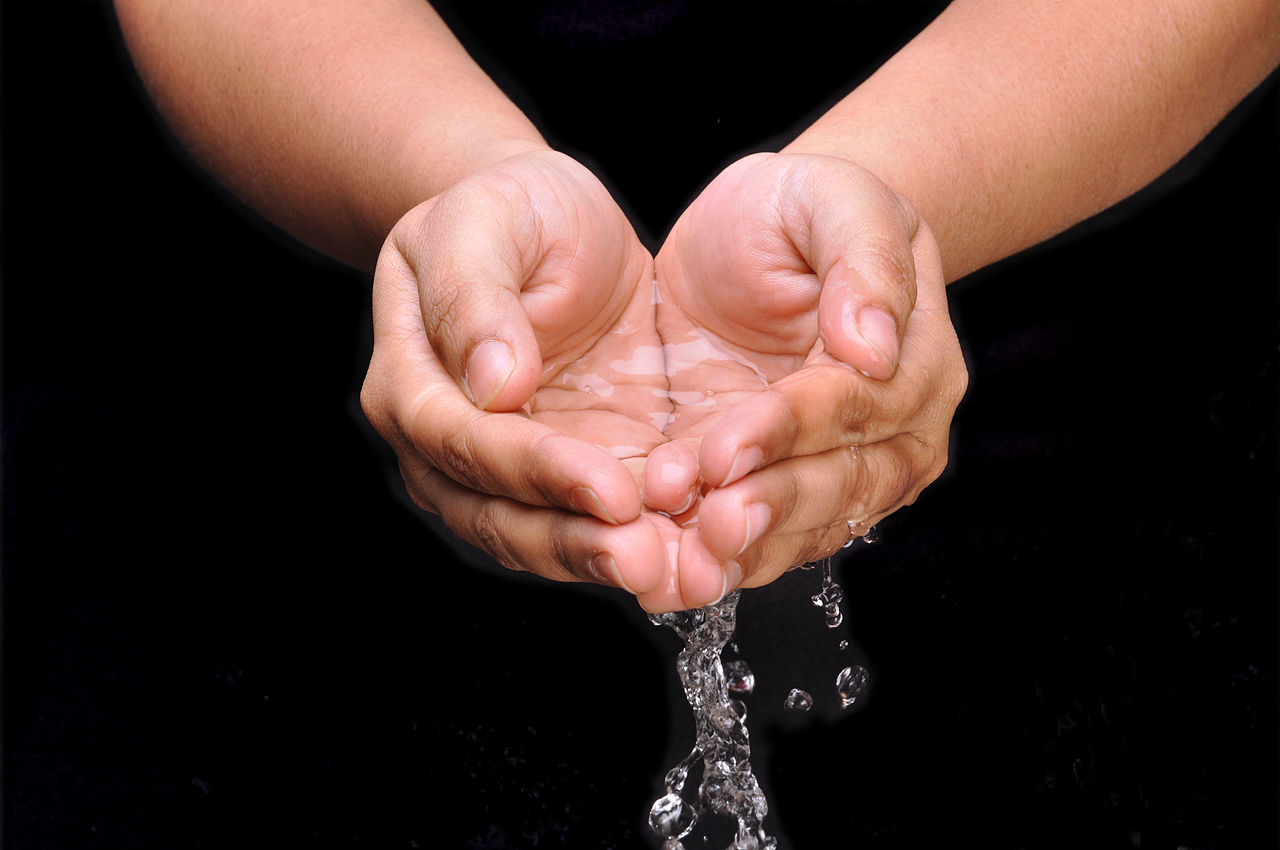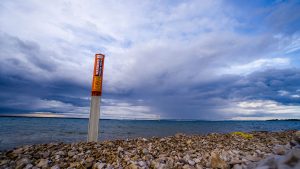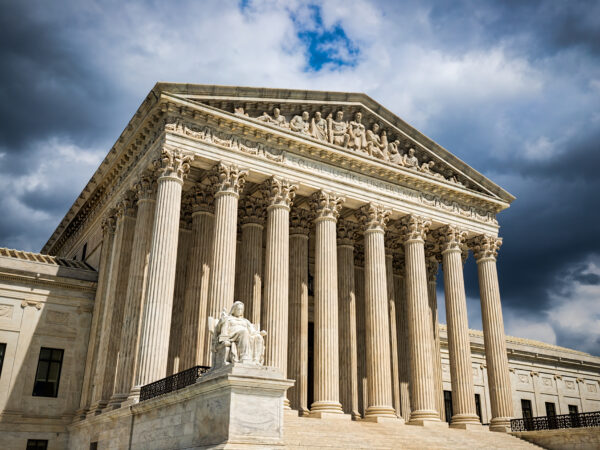
But respondents express concern for their “deteriorating” health
An overwhelming number, 88 percent of Great Lakes region residents polled, believe that protecting the lakes is important and are willing to pay for their restoration, according to a U.S. and Canadian poll that measures the public’s view of the lakes.
But when it comes to the perception of overall Great Lakes health, 33 percent of respondents said the health of the lakes is deteriorating compared to 25 percent in the same 2015 poll.

Smartphone at the beach, Photo by Rainer Maiores via pixabay.com cc0.0
The deteriorating number climbed to 39 percent for millennials defined as 18-34 year olds.
The poll was conducted by International Joint Commission (IJC), the bi-national organization that advises the two governments on trans-border water issues. It was accomplished in January 2018 and included 4,250 respondents in the eight Great Lakes states and the province of Ontario plus Tribes and First Nations.
Ontario and Michigan had the largest number of poll samples comprising over 50 percent of the total responses. Sample size was based on coastal population. An oversampling of Tribes and First Nations was done to insure their views were represented in the final report.
More regulation needed
The poll found that more than half of the people who responded feel that regulation of the Great Lakes is lacking and said they would be willing to to pay for increased regulation through higher prices for consumer products.
The Trump administration is actively deemphasizing regulation and enforcement activities and is in the process of shrinking the U.S. Environmental Protection Agency, a pledge from his 2016 presidential election campaign.
When asked to name the most significant problems the Great Lakes face the top responses were that they didn’t know or pollution in general.
Invasive species were mentioned as a significant threat by 17 percent of those responding but only 4 percent mentioned algae as a problem and just 1 percent identified agricultural pollution, which is the primary source for algae.
Official sources list the Great Lakes in overall fair and unchanging condition except Lake Erie which is classified as “poor and deteriorating.”
Lake Erie’s problem is nutrient runoff from farms which contributed to the 2014 Toledo water crisis that left 400,000 people without drinking water.
Farmers in the Great Lakes region have received $100 million in grants since 2010 to support conservation practices. A study is in process to determine the effectiveness of the grants.
Ohio EPA Director Craig Butler recently said the state has a long way to go to hit Lake Erie pollution reduction targets and “we’re not even able to say we’re on the right trajectory.”

Line 5 pipeline, Photo by dptv
While Enbridge’s aged Line 5 pipeline at the Straits of Mackinac is seen as a major threat to Lakes Michigan and Huron and Michigan’s tourism economy, only 3 percent of respondents saw pipelines as a threat.
The Line 5 threat has been increasingly in the news since 2013.
Similarly, only 3 percent mentioned climate change and extreme weather as a threat.
Severe storms recently hit Michigan’s Upper Peninsula causing widespread damage. It was the third extreme weather event in six years but a Great Lakes scientist says “residents don’t seem to have a sense of urgency,”
Disconnect
Asked to explain the disconnect between the severity of Lake Erie’s algae problem and its low showing in the poll, Great Lakes policy adviser Dave Dempsey laid the blame on the agribusiness lobby.

Dave Dempsey, FLOW Senior Adviser, Photo by davedempseybooks.com
“They’ve convinced the vast majority of Americans that the family farm is the symbol of American agriculture and it’s hard to envision a family farm as a major pollution threat,” Dempsey said.
“More and more farms are huge operations run by industrial firms,” according to Dempsey who worked in a policy role at the IJC for six years until 2017.
On the public’s support for regulation, Dempsey said “the support is there for environmental regulations and the politicians are scared of their own shadows.”
Dempsey told Great Lakes Now that “when the threat is clear and immediate, the public always supports strong standards. It’s the long-term slow-motion threats like climate change that befuddle and dissipate public support for regulations.”
In a media call, report authors focused on the positive including high response rates and the value that the public puts on the Great Lakes for recreational opportunities and economic benefit.
Not addressed was a reason for the high percentage of respondents who said the health of the Great Lakes is deteriorating.
Since 2010 the U.S. has invested nearly $3 billion in restoring the Great Lakes and Canada in late 2017 ramped up Great Lakes funding.
The complete poll results are linked here.
Featured Image: Handful of Water, Photo by Biswarup Ganguly via Wikimedia cc 3.0
1 Comment
-
It’s not all about farms…..how about all the lawns that people are dowsing with weed killers and fertilizers? For example, I have a pond near my house that used to be clear until houses were built near it…..then it developed a green crust. We don’t need to be pouring weed killers and fertilizers on lawns at the expense of nature, not to mention the money we would save.




